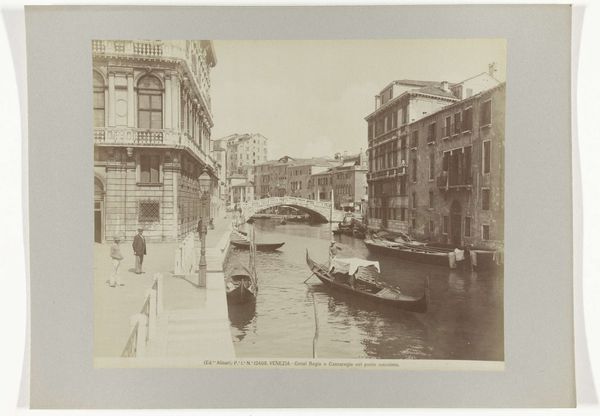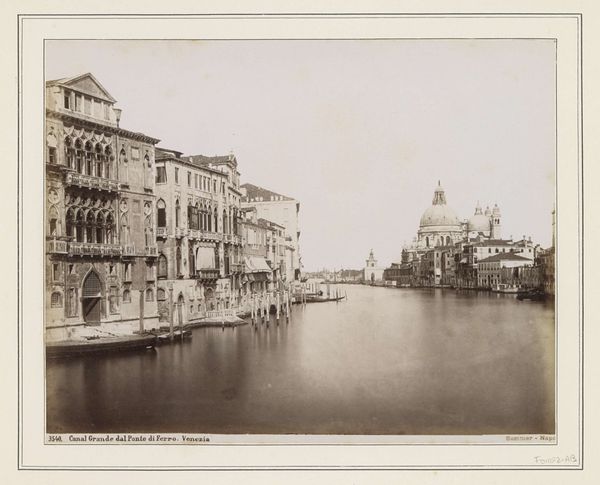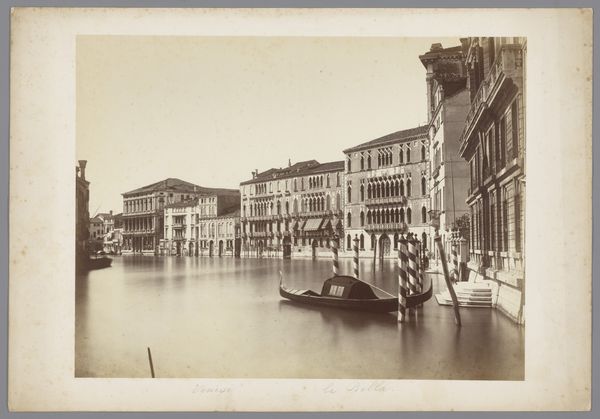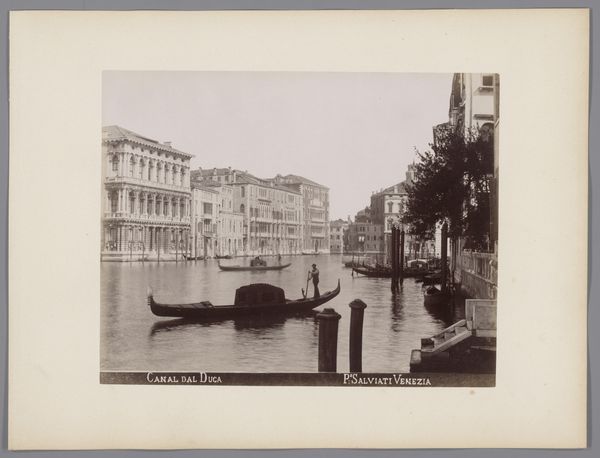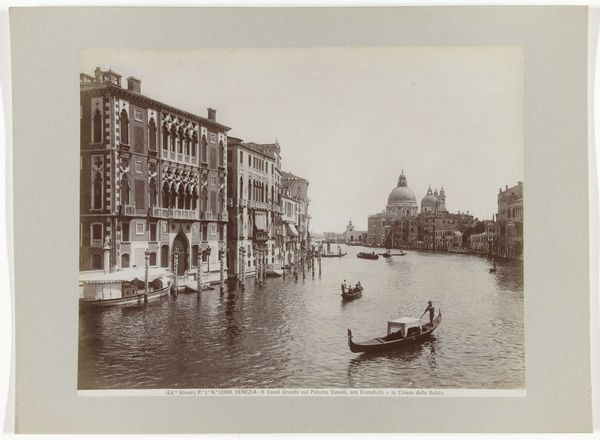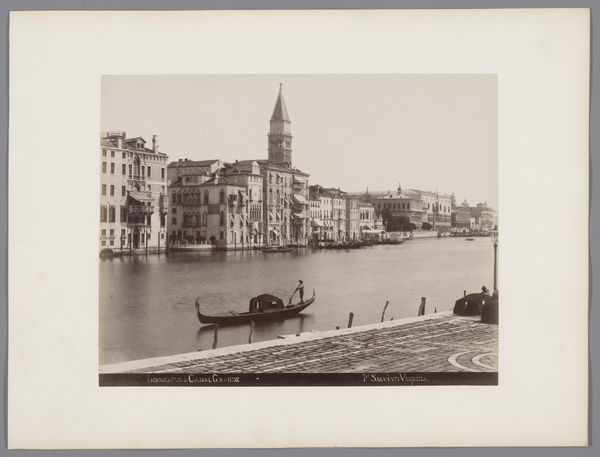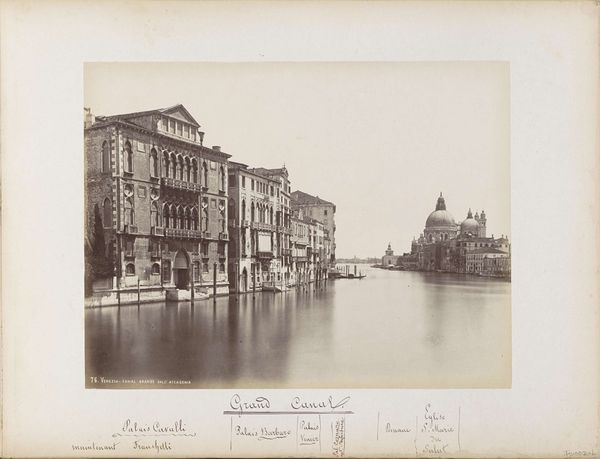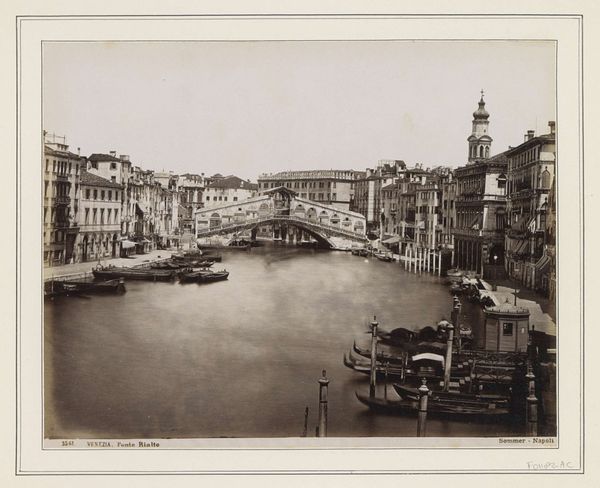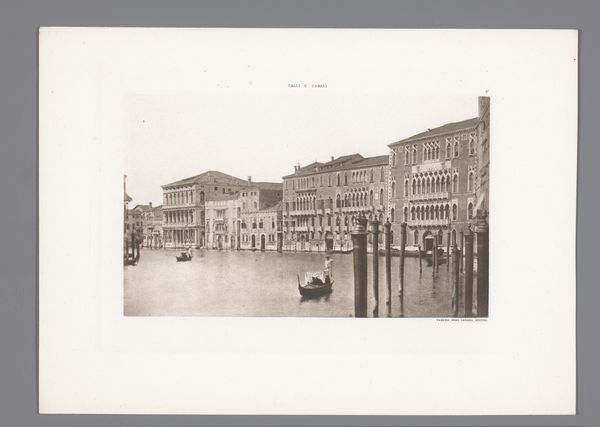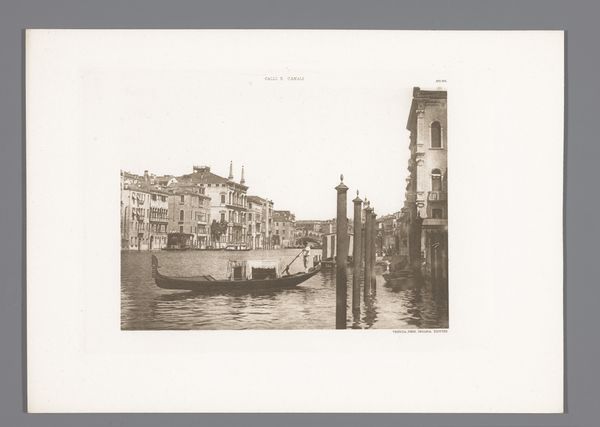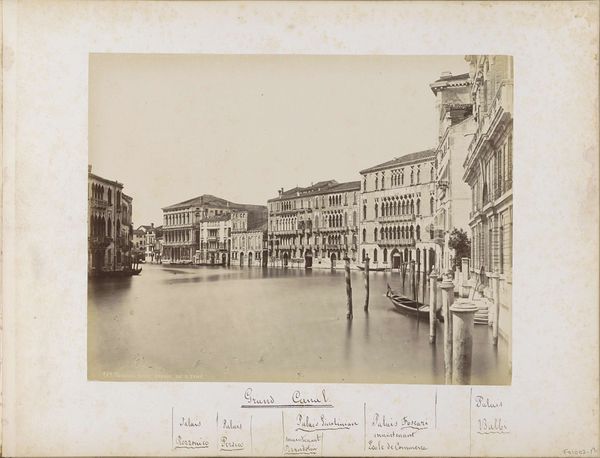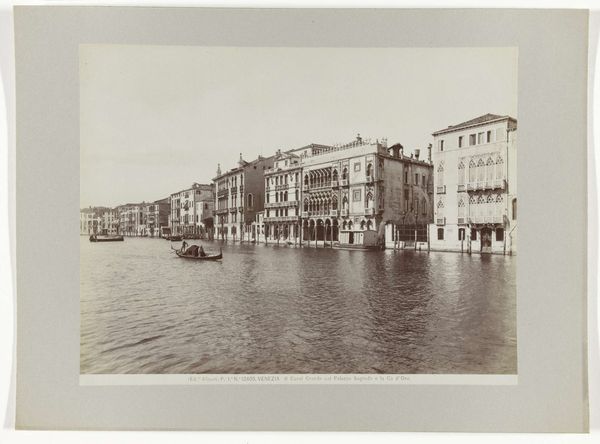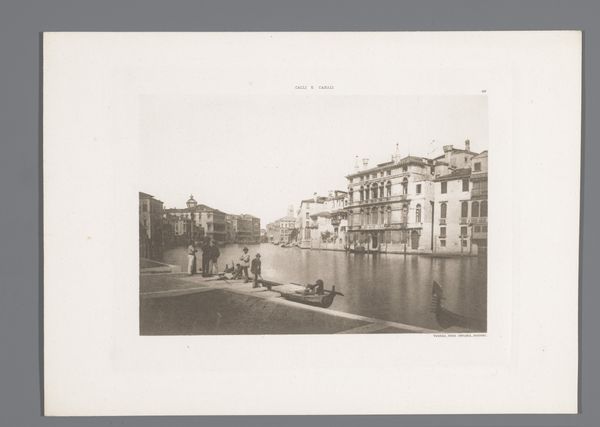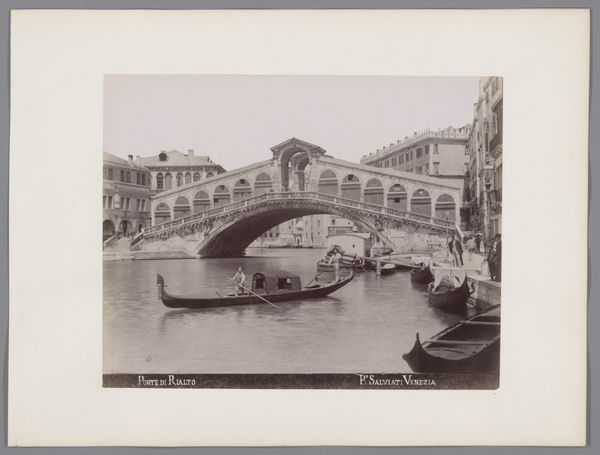
Dimensions: height 197 mm, width 249 mm, height 276 mm, width 364 mm
Copyright: Rijks Museum: Open Domain
Curator: Let's discuss this evocative gelatin silver print titled "Gondels en zeilschepen op het Canal Grande te Venetië" by Paolo Salviati, likely created between 1860 and 1870. It presents a view along Venice's famous canal. Editor: My first impression is one of stillness, despite the waterway. The gondola in the foreground draws the eye, but there’s also something melancholic about the faded tones and the quiet grandeur of the buildings. It speaks of a Venice caught between tradition and transformation. Curator: That sense of stillness speaks to the photographic process of the time. Consider the materials: the glass plate negative, the silver gelatin emulsion painstakingly applied and exposed. Photography offered a new way of seeing, a mechanically reproduced reality, impacting how Venice presented itself to the world as a site of culture and tourism. Editor: Exactly! It's fascinating how photography reshaped perceptions of Venice. Previously, the city was known through paintings, prints, or written accounts, but now, images like this brought a new level of realism. The photograph itself becomes a commodity, contributing to Venice's branding as a romantic destination. We can clearly see the signature of the photographer P. Salviati, giving value and marking authorship. Curator: Indeed, and thinking about that branding, we can see in this work, there's a clever merging of craft and industry. While the architecture, captured in exquisite detail through light and shadow, feels enduring, the very act of creating this photograph hinged on advancements in chemistry and manufacturing. What do we make of the light? It's so diffuse... Editor: The light adds to the Romantic feel. The softened contrast enhances the nostalgic impression of this old city, perfect to recall idealized travel memories for upper-middle-class tourists who could buy those prints. It certainly emphasizes a specific reading, a privileged one perhaps, more than presenting an objective or working-class view of Venetian daily life. Curator: Precisely, the photographic process itself became part of that system of artistic and social display. Editor: It prompts you to consider how powerful institutions, such as photography studios, dictated the representation and popularization of certain places. It shows how even something that pretends to be objective—a photograph—is really shaped by economics and the selective eye of whoever is producing it. Curator: Ultimately, this gelatin silver print provides a captivating perspective into Venice as both a place and a symbol caught in time through this unique process. Editor: Yes, a complex picture built up from the historical, cultural, and material circumstances of its making. It certainly offers insight into how imagery and socio-political conditions interweave.
Comments
No comments
Be the first to comment and join the conversation on the ultimate creative platform.
